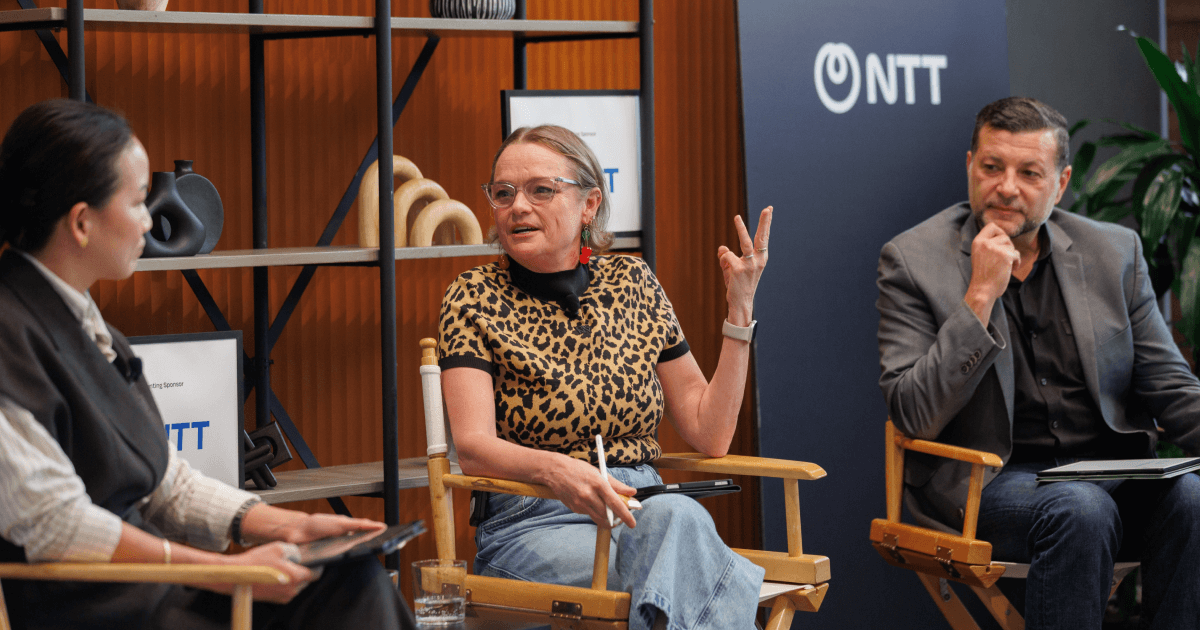How trains, time zones, and trucks paved the way for modern disruption


What do train track gauges, time zones, and shipping containers all have in common? No, this isn’t the start of a bad joke. They actually play a role in your ability to disrupt the market. Let’s explore these old-school game changers and discuss how they’ll help you shake things up.
Track trouble
Picture the mid-1800s. The Civil War was in full swing, and the North and the South had very different strategies for transporting materials.
The North was used to moving goods across the country — everything from Pennsylvania steel to West Virginia coal and plains states agricultural produce. All of these long trips required a network of railroad operators and cars, so to avoid chaos and gridlock, the North standardized the distance between the wheels of the car and the distance between the tracks on their gauges. The result? Trains zipped across the country without a second thought.
In the South, the original goal was simply to get goods from the ports to the plantations. These short trips didn’t require a slew of cars and operators. But once the South was on its own — and had to transport critical materials across the entire Confederacy — its railroad network grew exponentially. While the North was speeding along, the South was at a standstill trying to coordinate matching gauges at all of their different boundaries.
Guess what? The South’s gauges were tech debt! They were a legacy system that caused massive friction and created a major supply chain disadvantage in the war.
On track and on time
The railroads have another important lesson. Even though standardized gauges had revolutionized train operations, a different issue emerged in the 1880s: the most efficient railroad cars in the world aren’t helpful if people don’t know what time they’re arriving.
Back then, people used sunrise and sunset to determine the time. The sun sets at 6:12 in Baltimore so that’s what time it is. But in Detroit, the sun sets at 6:18. See the problem? My 6:12 is your 6:18 — so when is that train actually pulling into the station?
The railroads tried creating their own time zones, but they wound up with hundreds of them. Not exactly a model of efficiency. Finally, they decided on standardized time zones for different regions, where sunrise, sunset, and the midpoint of the day were all close enough to be considered the same time. Now, when you say 6:12 in Baltimore, I know that’s 5:12 in Detroit. And just like that, everyone was happily standing at the train station at the right time.
We may take time zones for granted today, but (pardon the pun) they’re a timeless efficiency solution for companies all over the world. That’s some seriously positive disruption.
The original plug-and-play
Let’s leave the railroads and head to the high seas. In the 1930s, a bored truck driver watched as barrels and boxes of all shapes and sizes were carried off the ship one by one and loaded into waiting trucks. This driver had plenty of time to think, which led to an aha moment – why not load these barrels and boxes into bigger containers before they get on the ship so you only have to carry one container off and onto the truck? Even better, if these bigger containers were a standard size, like the full carrying capacity of the truck, any container could be loaded onto any truck. That aha moment became the semi-trucks you see all over the roads today.
The cloud uses the same philosophy as those shipping containers. Simply plug a containerized app into your infrastructure and take advantage of everything the cloud has to offer.
What can you learn from all of this?
Disruption can come from anywhere, but good ideas can take a while. We’re not all sitting around staring at shipping barrels or forced to get creative because of a civil war. Events like these force us to be disruptive, but they’re rare. There usually won’t be a galvanizing event to spring your organization into action.
Don’t think you have to come up with the next big thing, though. Small innovations can work wonders. They may not always be scalable, but that’s why your team should be consistently evaluating their impact. Are they still meeting your needs? Have they exposed an opportunity somewhere else? That small idea may lead to a slightly bigger one, that takes you to the next level as you grow and scale.
That’s why it’s so important to keep your eyes peeled for — and your mind open to — good ideas from every angle. They may take a while to take root, but the best ones get talked about for a long, long time.



